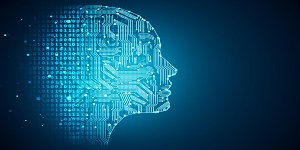
Artificial Intelligence Webinar

Theme: Shorthand for a combination of technologies
Webinars on Artificial Intelligence, Automation and Robotics will be held during August 26-27, 2020 at Dubai, UAE. This Live Webinar will unite Computer Engineers, driving analysts, researchers and scientists in the area of interest from all over the world, which would provide a platform to discuss and exchange of ideas and exploration of future research avenues in various fields of Artificial Intelligence, Automation & Robotics.
Being a pioneer in this field, Meetings International in producing top notch conferences, meetings, workshops and symposia in all major fields of science, engineering and medicine. Meetings Int. has been associated with national and international associations, Universities, Industries, and high-level individuals, dedicated to hosting world-class conferences and events. The key objective of Meetings Int. is to provide the communication between science and engineering research among the Academic and Industrial Community.
Artificial Intelligence 2020 Conference covers about Artificial intelligence (AI) which is a branch of computer science that involves in developing computer programs to complete tasks. AI algorithms can tackle learning, perception, problem-solving, language-understanding and/or logical reasoning. It is used within the Google searches, Amazon's recommendation engine, and GPS route finders. Even when AI is used to control robots, the AI algorithms are only part of the larger robotic system, which also includes sensors, actuators, and non-AI programming.
Robotics is a branch of technology that deals with physical robots, which are programmable machines that are able to carry out a series of actions easily. The three important factors which constitute a robot are; Robots interact with the physical world through sensors and actuators, they are programmable and are usually autonomous or semi-autonomous. Artificially intelligent robots are the bridge between robotics and AI that are controlled by AI programs. All industrial robots are programmed to carry out a repetitive series of movements where they do not require artificial intelligence.
Session 02: Artificial Neural Networks
Artificial Intelligence 2020 Conference covers the information about the artificial neural networks that are one of the main tools used in machine learning. As the “neural” part of their name suggests, they are brain-inspired systems which are intended to replicate the way that we humans learn. Neural networks consist of input and output layers, as well as a hidden layer consisting of units that transform the input into something that the output layer can use. They are excellent tools for finding patterns which are far too complex or numerous for a human programmer to extract and teach the machine to recognize. Artificial neural networks are the key tool of machine learning. These are the systems that are developed by the inspiration of neuron functionality in the brain, which will replicate the way the humans learn. Neural networks constitute both input & output layers with hidden layers that contain units which change input into output.
Session 03: Evolutionary Computation
Artificial Intelligence 2020 would be discussing on the various topics like nature-inspired algorithms, population-based methods, and optimization where selection and variation are integral, and hybrid systems where these paradigms are combined. Evolutionary Computation draws inspiration from nature’s evolutionary process. Evolutionary Computation is a name given to the group of algorithms and problem-solving techniques inspired by the evolutionary process, to provide solutions for highly complex problems which cannot be solved in polynomial time. Artificial Intelligence as we know and understand to set a path through the contrast and what we achieve by Evolutionary Computation, i.e. finding new routes to the necessarily venture. In simpler terms, the present state of Artificial Intelligence is limited to what our knowledge deems right or wrong.
Session 04: Machine learning and computing
Artificial Intelligence 2020 Conference aims to promote the integration of machine learning and computing. The focus of the conference would be on state-of-the-art machine learning and computing. It also emphasizes the creation of intelligent machines that work and reacts like humans. Some of the activities computers with artificial intelligence are designed for Speech recognition. Machine Language and Artificial Intelligence are indeed similar. Artificial intelligence is about problem solving, reasoning, and learning in general. Machine learning is specifically about learning from examples, from definitions. The easiest way to think of their relationship is to visualize them as concentric circles with AI first and ML sitting inside with DL fitting inside both. The crucial point is that they share the idea of using computation as the language for intelligent behaviour.
Session 05: Machines and Minds
The Artificial Intelligence 2020 Conference explains about the most basic types of AI systems that are purely reactive, and have the ability neither to form memories nor to use past experiences to inform current decisions. Machines that are more advanced and class not only form representations about the world, but also about other agents or entities in the world. It would invite abstracts related to the Machines and Mentality. Discussions would be on the Knowledge and Its Representation, Epistemic Aspects of Computer Programming, Connectionist Conceptions, Artificial Intelligence and Epistemology, Computer Methodology, Computational Approaches to Philosophical Issues, Philosophy of Computer Science, Simulation and Modelling and Ethical Aspects of Artificial Intelligence. It forefront of transformational technologies, scientific research, and bold new thinking that enables humans to function at higher levels. This could be in fields as diverse as neuroscience, computer science, psychology, bio-tech, augmented reality, nutrition & fitness and so many more areas of pioneering work.
Session 06: Robotic Process Automation (RPA)
The Artificial Intelligence 2020 Conference defines about the RPA which is an Independent Intellectual Property. The first professional vendor of RPA products in China, RPA aims to solve the problem of business process automation for enterprises, greatly reducing the number of people engaged in standard, repetitive, cumbersome and high-volume work tasks. It is the purest form of automation. RPA is intended to save business and white-collar workers time. RPA is built by RPA engineers via a GUI, or a graphical interface, which they use to arrange the sequence of tasks RPA automates. For the most part, RPA is based on rules, or if-then statements that tell a program what to do under certain conditions. RPA and AI overlap in that you can infuse RPA with AI. Useful applications of advanced AI in RPA could include image recognition or text analysis. With its lightweight, efficient and fast performance, RPA has stepped out of the "machine-making" stage and stepped into a new field of "replacement for people to do things."
Session 07: Speech Recognition
The Artificial Intelligence 2020 Conference describes about the Speech recognition, which is the technology that can recognize spoken words, which can then be converted to text. Its subset is voice recognition, which is the technology for identifying a person based on their voice. Some speech recognition systems need "training" (also known as "enrolment") wherever an individual speaker reads text or isolated vocabulary into the system. The system analyses the person's specific voice and uses it to fine-tune the recognition of that person's speech, resulting in increased accuracy. Systems that don't use coaching are referred to as "speaker independent" systems. Systems that use training are called "speaker dependent. The 5 top tech companies of the world like Facebook, Amazon, Microsoft, Google and Apple are already offering this feature on various devices through services like Google Home, Amazon Echo and Siri.
Session 08: Natural Language Processing
Artificial Intelligence 2020 Conference analyzes the Natural Language Processing, which is usually shortened as NLP, is a branch of artificial intelligence that deals with the interaction between computers and humans using the natural language. It is the technology used to aid computers to understand the human’s natural language. The ultimate objective of NLP is to read, decipher, understand, and make sense of the human languages in a manner that is valuable. As our unconscious mind is a powerful tool, it can also resolve the problems that you are not seeing consciously. NLP entails applying algorithms to identify and extract the natural language rules such that the unstructured language data is converted into a form that computers can understand. The unconscious has the answers that you need to overcome that particular situation. When you become aware of how to overcome a challenge, your whole thought process changes.
Session 09: Robotics in Industry
The Artificial Intelligence 2020 Conference notifies the advantages of robotics in healthcare as they have the potential to change a wide variety of health care practices, such as surgery, rehabilitation, therapy, patient companionship, and everyday activities. Robotic instruments used in health care are not designed to make their work easier. Robotics in agriculture help to increase the productivity in the agriculture industry has been actively working to adopt different forms of robotic technology. Farmers have already been using tractors and harvesters that are self-guided by GPS. Sensor technology is also being utilized to manage pests and diseases that affect crops. Robotics used in manufacturing help to increase productivity and efficiency. Many robots in manufacturing collaborate with workers to perform repetitive, monotonous. Robotic manufacturing technology is also becoming safer to operate. Cameras, sensors, and automatic shut-off capabilities enable robots to sense and stay clear of humans in the workplace. Robotic devices are establishing a wide presence in several commercial industries like military, etc. as the robotic technologies become more affordable with the ability to impact our lives in countless ways.
Session 10: Data mining with big data
The Artificial Intelligence 2020 Conference illustrates about the Big data, which concern large-volume, complex, growing info sets with multiple, autonomous sources. With the fast development of networking, info storage, and also the data assortment capability, large info are currently quickly increasing altogether science and engineering domains, as well as physical, biological and biomedical sciences. This paper presents a HACE theorem that characterizes the alternatives of the huge knowledge revolution, and proposes an enormous processing model, from the data mining perspective. The data-driven model involves demand-driven aggregation of information sources, mining and analysis, user interest modelling, and security and privacy issues. We analyse the challenging problems within the data-driven model and also in the massive data revolution.
Session 11: Role of Automation in Robotics
Artificial Intelligence 2020 Conference mentions that Automation is using computer software, machines or other technology to carry out a task which would otherwise be done by a human worker. There are many types of automation, ranging from the fully mechanical to the fully virtual and from the very simple to the mind-blowingly complex, while Robotics is a branch of engineering which incorporates multiple disciplines to design, build, program and use robotic machines. There are obviously crossovers between the two as Robots are used to automate some physical tasks, such as in manufacturing. It also involves the Business Process Automation (BPA), which is a high-level strategy to streamline business processes. It involves formalizing all processes within the business and then integrating them into automation software. Robotic Process Automation (RPA), which refers to "software robots" which are programmed to use computer programs in the same way as a human operator would. Intelligent Process Automation (IPA), is an extension of RPA which uses AI to learn how humans perform tasks when using a computer program.
Session 12: Applications of Automation
The Artificial Intelligence 2020 Conference describes about the most important application areas for automation technology, manufacturing and its types in production as fixed automation, programmable automation and flexible automation. Fixed automation, which is also known as “hard automation,” refers to an automated production facility in which the sequence of processing operations is fixed by the equipment configuration. Programmable automation is a form of automation for producing products in batches, which are made in batch quantities ranging from several dozen to several thousand units at a time. In each new batch, the production equipment must be reprogrammed and changed over to accommodate the new product style. The program is coded in computer memory for each different product style, and the machine tool is controlled by the computer program. Industrial robots are another example. Flexible automation is an extension of programmable automation. In flexible automation, the variety of products is sufficiently limited so that the changeover of the equipment can be done automatically. The reprogramming of the equipment in flexible automation is done off-line; that is, the programming is accomplished at a computer terminal without using the production equipment itself.
The Artificial Intelligence 2020 Conference states about the Ethics of AI as the capacity of the Autonomous Systems to settle on choices for themselves, with practically zero contribution from people notably builds the utility of Artificial Intelligence. Some specialists and researchers have second thoughts about the utilization of Artificial Intelligence in different occupations. Essayists thought about the issue in a significant number of their works. It is significant that purchasers trust AI frameworks, and their acknowledgment in the public arena will be compromised. This Ethics related session of Artificial Intelligence intends to give a motivation inside which specialists and approach organizer predict the present and future moral issues and to give bits of knowledge about concern identified with moral conduct. These also involve Machine Ethics, Robot Ethics and Rights, Philosophy of Artificial Intelligence, AI: Threat to Human Dignity, Ambient Intelligence Challenges, Artificial Consciousness, Artificial Moral Agents, Computer Power and Human Reason.
Session 14: Modern Artificial Intelligence
Artificial Intelligence 2020 Conference explains about a true artificially-intelligent system which is one that can learn on its own. Neural networks can make connections and reach meanings without relying on pre-defined behavioural algorithms. True A.I. can improve on past iterations, getting smarter and more aware, allowing it to enhance its capabilities and its knowledge. AI is the ability of a controlled robot to perform assignments usually connected with astute creatures. At present Artificial Intelligence strategies have experienced a renaissance following parallel advances in PC control, big measures of information, and hypothetical comprehension. The Modern Artificial Intelligence session will set an unmistakable picture about different features like, Fuzzy Logic, Shopping and Customer Service, AI and Emotions, Discovering New Drugs, AI: Educating the Future, AI based Aviation System, Artificial Intelligence in Healthcare, Virtual Reality and Image Processing, AI and Space. Some companies like Apple, Facebook and Tesla rollout ground-breaking updates and revolutionary changes to how we interact with machine-learning technology. A.I. is being used today by businesses both big and small.
World Market Analysis: The artificial intelligence market was valued at USD 16.06 billion in 2017 and is expected to reach USD 190.61 billion by 2025, at a CAGR of 36.62% during the forecast period. The base year considered for the study is 2017, and the forecast period is between 2018 and 2025.
Artificial Intelligence Market Study Objectives:
To define, describe, and forecast the overall artificial intelligence market segmented on the basis of offerings, technologies, end-user industries, and regions
To forecast the market size, in terms of value, for segments with respect to 4 major regions North America, Europe, APAC, and RoW
To provide detailed information regarding the major factors (drivers, restraints, opportunities, and industry-specific challenges) influencing the growth of the market
To analyse the micro markets with respect to individual growth trends, prospects, and contributions to the overall market
To analyse opportunities in the market for various stakeholders by identifying the high-growth segments of the market
To analyse various strategic developments, such as joint ventures, mergers and acquisitions, product launches, and research and development (R&D), in market
Asian Market Analysis: Asia Pacific Artificial Intelligence Market by Offerings (Hardware, Software, Services) by System (Intelligence Systems, Decision Support Processing, Hybrid Systems, Fuzzy Systems) by Technology (Machine Learning, Robotics, Image Processing, Speech Recognition, Natural Language Processing, Cognitive Computing (Other Technology)) by Verticals (Technology & Telecommunications, Banking, Financial Service & Insurance, Retail, Media & Entertainment, Automotive & Transportation, Agriculture, Resources & Utilities, Manufacturing, Healthcare, Education, Other Verticals) by Geography.
American Market Analysis: North America Artificial Intelligence Market by Offerings (Hardware, Software, Services) by System (Intelligence Systems, Decision Support Processing, Hybrid Systems, Fuzzy Systems) by Technology (Machine Learning, Robotics, Image Processing, Speech Recognition, Natural Language Processing, Cognitive Computing (Other Technology)) by Verticals (Technology & Telecommunications, Banking, Financial Service & Insurance, Retail, Media & Entertainment, Automotive & Transportation, Agriculture, Resources & Utilities, Manufacturing, Healthcare, Education, Other Verticals) by Geography.
European Market Analysis: The European artificial intelligence market is estimated to grow at a CAGR of 43.2% from 2016 to 2022. The Europe artificial intelligence market is currently witnessing healthy growth as companies have started leveraging the benefits of such disruptive technologies for effective customer reach and positioning of their service solutions. Market growth is also supported by an expanding application base of artificial intelligence solutions across various industries
Top Universities of the World:
- University of Oxford– UK
- University of Cambridge-UK
- Massachusetts Institute of Technology-USA
- California Institute of Technology-USA
- Harvard University- USA
- University College London
- University of Chicago-US
- Swiss Federal Institute of Technology-Switzerland
- California Institute of Technology-US
- Stanford University-US
Top Universities of Asia:
- Seoul national University
- The Chinese University of Hong Kong
- KAIST- Korea Advanced Institute of Science & Technology
- The Hong Kong University of Science & Technology
- Fudan University
- Peking University
- Tsinghua University
- Nan Yang Technological University
- University of Hong Kong,
- National University of Singapore.
Top Universities of US:
- University of Pennsylvania
- Columbia University
- Yale University
- Cornell University
- Princeton University
- University of Chicago
- California University of Technology
- Harvard University
- Stanford University
- Massachusetts Institute of Technology.
Top Universities of Europe:
- University of Oxford
- University of Cambridge
- Imperial College
- ETH Zurich
- UCL
Artificial Intelligence Universal Societies:
- Argentina Society for Informatics & OperationsResearch
- Pacific Rim International Caoference on AI
- Bulgarian Artificial Intelligence Association
- Chinese Association for Artificail Intelligence
- Danish Artificial Intelligence Society
- Finish Artificial Intelligence Society
- AI & Robotics
- Artificial Neural Networks
- Evolutionary Computation
- Machine learning and computing
- Machines and Minds
- Robotic Process Automation (RPA)
- Speech Recognition
- Natural Language Processing
- Robotics in Industry
- Data mining with big data
- Role of Automation in Robotics
- Applications of Automation
- Ethics of AI
- Modern Artificial Intelligence
- Journal of Computer Engineering & Information Technology
- Journal of Applied Bioinformatics & Computational Biology
- Journal of Applied Mechanical Engineering
10 Organizing Committee Members
8 Renowned Speakers
VARTUL MITTAL
Technology & Innovation Specialist, India
India
Ryspek Usubamatov
Professor of Kyrgyz State Technical University after I. Razzakov, Kyrgyzstan.
Kyrgyzstan
Abdeen Mustafa Omer
Associate Researcher at Energy Research Institute (ERI)
UK
Rakesh Kumar Mishra
Researcher and Space and Solar Scientist.
India
HYEONG CHEOL MOON
Ph.D, Chungbuk National University
South Korea
South Korea
BILL JENSEN
CEO, The Jensen Group
USA
USA
ROMAN L TANKELEVICH
Professor, California State University Long Beach
USA
USA
IVANA HALUSKOVA BALTER
Professor, French Society of Immunology
France
France









































































































































